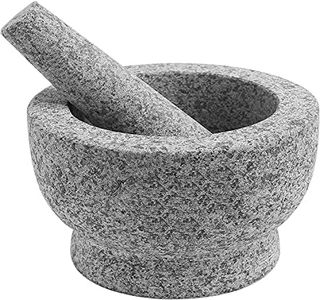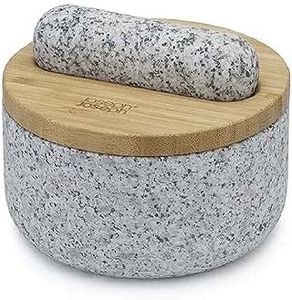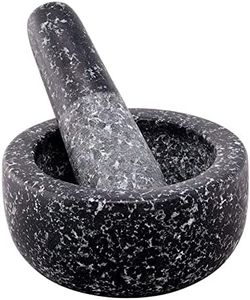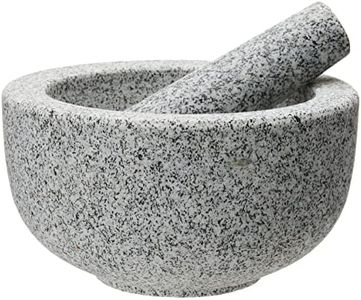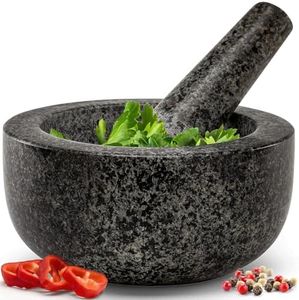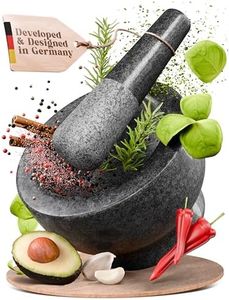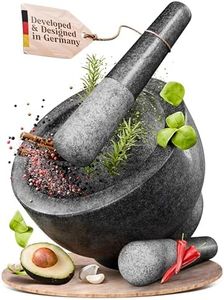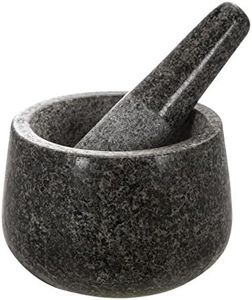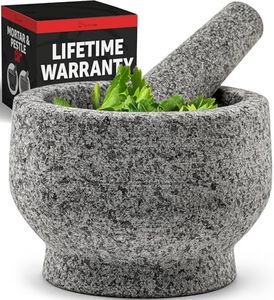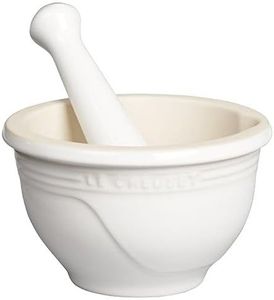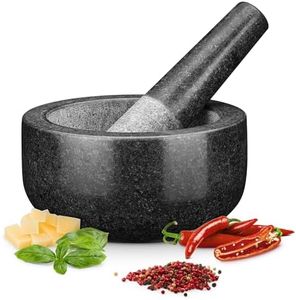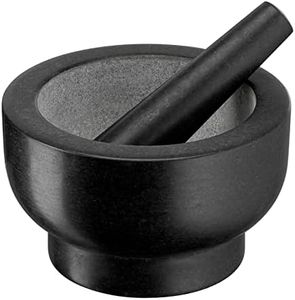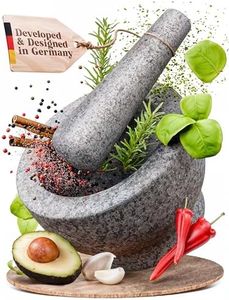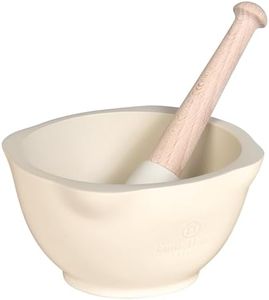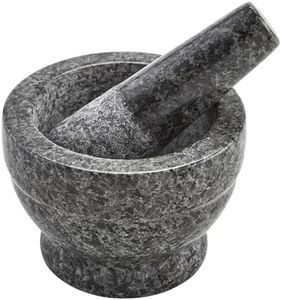We Use CookiesWe use cookies to enhance the security, performance,
functionality and for analytical and promotional activities. By continuing to browse this site you
are agreeing to our privacy policy
10 Best Mortar And Pestles
From leading brands and best sellers available on the web.By clicking on a link to a third party's website, log data is shared with that third party.
Buying Guide for the Best Mortar And Pestles
When choosing a mortar and pestle, it's important to find one that fits both your kitchen needs and your cooking habits. Mortar and pestles are classic tools for grinding and mixing spices, herbs, or even making pastes. The right choice depends on what you plan to use it for most, the quantity you want to process each time, and how easy you want cleaning to be. Understanding the key specifications will help you make an informed and satisfying choice.MaterialThe material of a mortar and pestle affects durability, grinding effectiveness, and ease of cleaning. Common options include stone (like granite or marble), ceramic, wood, and stainless steel. Stone is often heavy and rough, making it excellent for grinding hard spices but may be tricky to clean, especially if you use it with wet ingredients. Ceramic is smooth and good for softer foods or spices, but it can chip or break more easily. Wood is light and less abrasive, ideal for delicate work but can absorb flavors and stain. Stainless steel is durable and easy to clean but may be slippery for some uses. To choose, think about what you'll grind most often—hard spices need stone, while herbs and softer ingredients might fare better with ceramic or wood.
Size and CapacitySize refers to both the diameter and depth of the mortar, and capacity reflects how much you can process at one time. Small mortars suit grinding spices for one meal, while larger ones are better for making pesto or curry pastes in bigger batches. If you mainly make small amounts or want the tool for spice blends, a compact one will do; if you often cook for several people or want to prepare things like guacamole or sauces, pick a bigger, deeper model.
Weight and StabilityHeavier mortars tend to stay put while you grind, which makes them easier and safer to use, especially for tough or large quantities of ingredients. Lightweight options are easier to move and store but may slip around on your counter unless they have a non-slip base. If you plan to grind hard spices or use both hands vigorously, a heavier and stable mortar is a better choice. On the other hand, if you prefer portability, go lighter but check for a stable base.
Surface TextureThe interior texture of the mortar and pestle affects how efficiently it grinds. A rough surface creates more friction, making fast work of hard seeds and spices, while a smoother surface won’t break down ingredients as quickly but is easier to clean, especially with sticky substances. For most versatility, look for a slightly rough interior that balances grinding speed with cleanability, but if you have a specific use (like making pastes), adjust accordingly.
Ease of CleaningMortar and pestles made from non-porous materials like granite or stainless steel are usually easiest to clean, since they don't absorb flavors or stains. Porous materials like wood or some ceramics might hold onto smells or moisture, which can impact future uses. Consider if you're willing to hand-wash or if you want a model that can go in the dishwasher. Choose based on how often you plan to use the tool and the kinds of foods you'll prepare.
